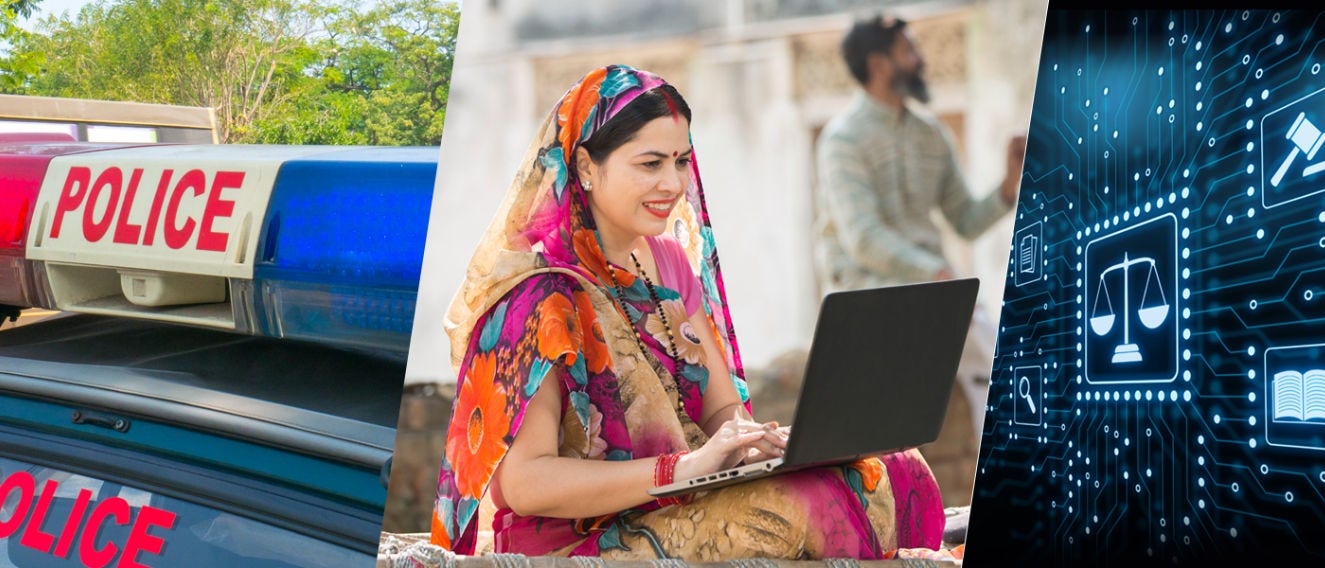

Enabling Transformation of Police Functioning via Digitization
Police, a part of the government's administrative apparatus, is usually responsible for upholding the law, preventing, detecting, and investigating crimes, and maintaining public safety and order.
Globally, policing is undergoing a dramatic transformation, owing to the evolution of justice and law enforcement systems and technological innovations.
India and its states are no exception. As Digital India gains traction, the traditional governance and administration models are giving way to an ICT-driven e-Governance paradigm. IT and digital technologies are increasingly permeating policing, helping modernize operations and enhance access, quality, and effectiveness of police services.
Key new-age technologies reforming policing today
As with any other system, the journey to a digital police system begins with digitization
Law Enforcement in India Taking Digital Leap
Information and Communication Technology (ICT) is already being used in police operations across states to varying degrees.
However, the lack of a central database rendered even the simplest tasks such as checking criminal records or identifying missing people a lot more cumbersome and time-consuming. A national-scale FIR and GD (general diary) entry tracking system would also help speed up investigations and related processes.
To address these issues, the Ministry of Home Affairs (MHA) and National Crime Record Bureau (NCRB) have envisaged the Crime and Criminal Tracking Networks and Systems (CCTNS), a mission mode project under the National e-Governance Plan (NeGP), a Government of India initiative1.
MHA and NCRB are entrusted with planning and handing over the Core Application Software (CAS) to States for deployment. States, as system owners, shall not only drive CAS implementation but can also configure, customize, and augment it.
Bridging Silos for Integrated Policing Ecosystem
With the world becoming increasingly interconnected, the idea of law enforcement has taken a whole new dimension. e-Governance in India is coming out of silos to a digitally integrated system built on three pillars: citizen-centricity, service orientation, and transparency.
Police and Public Order are State subjects. However, as part of the e-Governance initiative, efforts are being made to interlink all police stations and their supervisory offices to facilitate the exchange of crime and criminal’s information while automating the operations at police stations.
CCTNS mainly focuses on building a comprehensive and integrated system to improve the efficiency and effectiveness of policing, in line with the NeGP ethos: Centralized Initiatives, Decentralized Implementation. It as well promotes an IT-enabled, avant-garde tracking nationwide system for crime investigation and criminal’s detection.
Reportedly, 36 states & Union Territories (UTs) have begun sharing data with CCTNS, providing investigators with a pan-India database2.
Hitachi Systems Micro Clinic aids modernization of policing in Bihar
- Key Objectives
- Key Benefits
Digitization Paves Way for Smart Policing
Markedly, the government of Bihar collaborated with Hitachi Systems Micro Clinic, a Hitachi Group Company, as one of the technology partners for upgrading its law enforcement infrastructure around digital and innovation. Hitachi Systems Micro Clinic engaged with one of the global leaders in IT services and executed the digitization of 1326 police stations spread across Bihar. The project sought to improve law and order effectiveness through its state-of-the-art technology, with a focus on police stations and traffic management functions.
The creation and maintenance of digital databases on crime and criminals form the foundation of this project. It aims to ensure that Police has relevant, accurate and timely information to carry out investigations, criminal’s detection and tracking effectively and efficiently.
Realizing technology-enabled Bihar Police Station network
The project scope & process
- Pilot-stage police stations shortlisted to determine potential challenges
- A multi-phase plan for supply, procurement & implementation of 1326 police stations across Bihar in the second stage
- Addressing police requirements holistically, mainly with regard to police station functions & traffic management
- Improving Citizen-Police Interfaces
- Building interfaces with external agencies to facilitate inter-departmental information & data sharing
Contact-less complaint filing module, designed with citizen centricity in mind, enables citizens to lodge an online complaint from anywhere, anytime. Furthermore, streamlined, and hassle-free data recording, retrieval and analysis comes handy in during inter-state police communications.
Digitization of data ensures access to all stakeholders in the system: courts, transport authorities, hospitals, municipal authorities, etc. It helps address the challenges of public order and crime control more effectively. Importantly, CCTNS implementation rests on integrated service delivery. Fortifying citizen-police interfaces and the interfaces augurs well with this premise.
The multi-pronged solution encompassed:

- Project Planning & Management
- Commissioning and Integration of client site hardware (provided by Bihar Police) & making it operational
- Procurement, Commissioning & Configuring of IT infrastructure needed for Data Centre, DR Centre & Client sites
- Data Migration & Digitization of historical data
- Operation & Maintenance of all project components including those provided by Bihar Police
- Facilitating availability of the Network and Connectivity infrastructure for the project
- Handholding Change management, Capacity building & Training
Strengthening Law Enforcement for Sustainable Development
Law and order are the cornerstones of civilized societies that also underpin their socio-economic development. A safe, orderly, low crime rate environment also bodes well with commercial and business activities, driving investments and infrastructure building.
With technology becoming a part of everyday living, police systems are also fast acclimating to new-age technologies, keeping up with evolving law enforcement and legal landscape.
Hitachi is helping India build a robust, reliable, and effective e-governance framework to improve people’s Quality of Life. e-Governance enhances Social, Environmental, and Economic values, which is also the key driving force of Hitachi Social Innovation Business.
As India ushers into the e-policing era, digitization of data, Hitachi Systems Micro Clinic is leveraging its IT and digital expertise to contribute to digital infrastructure and digital empowerment of citizens.
Source:
- https://ncrb.gov.in/en/crime-and-criminal-tracking-network-systems-cctns
- https://economictimes.indiatimes.com/news /politics-and-nation/36-states-uts-sharing-data-with-crime-tracking-network/articleshow/77733662.cms










